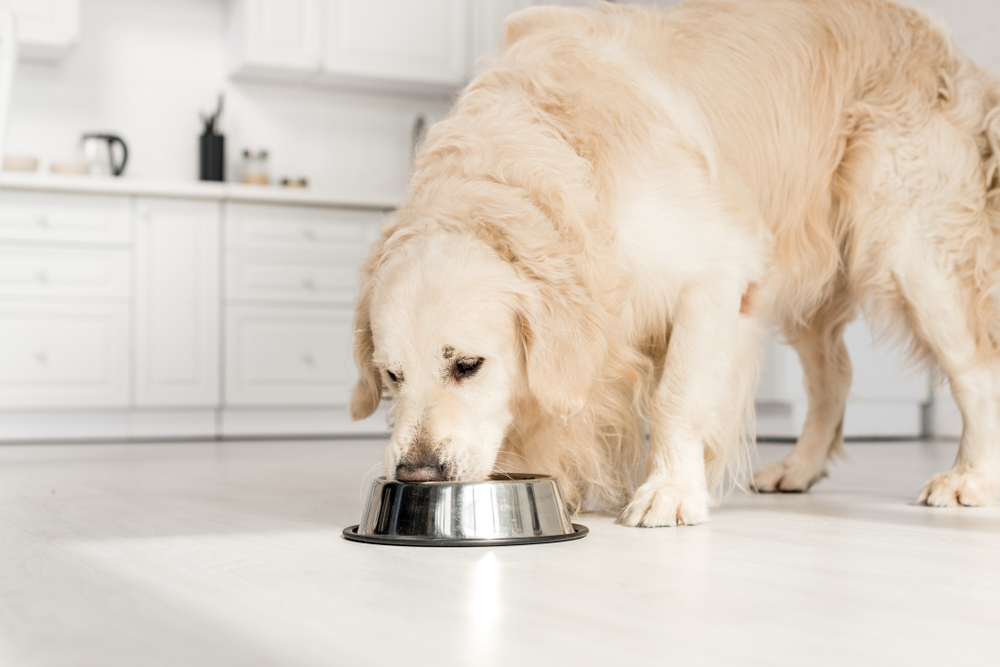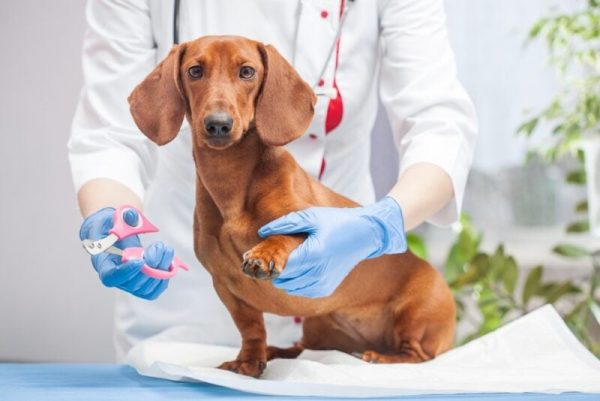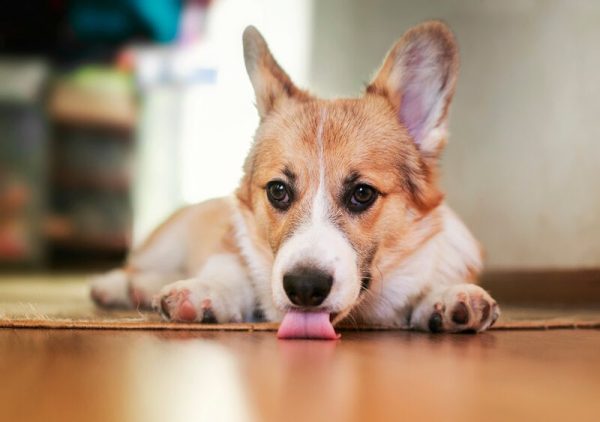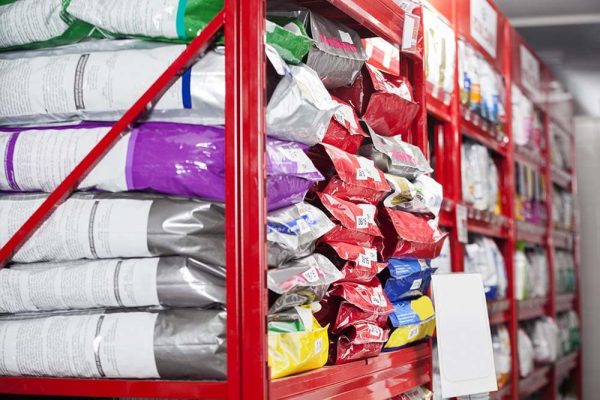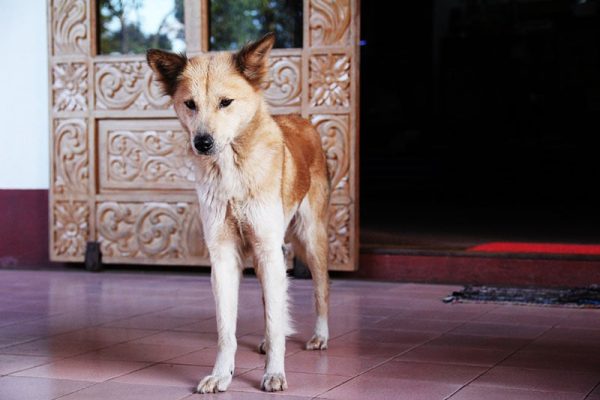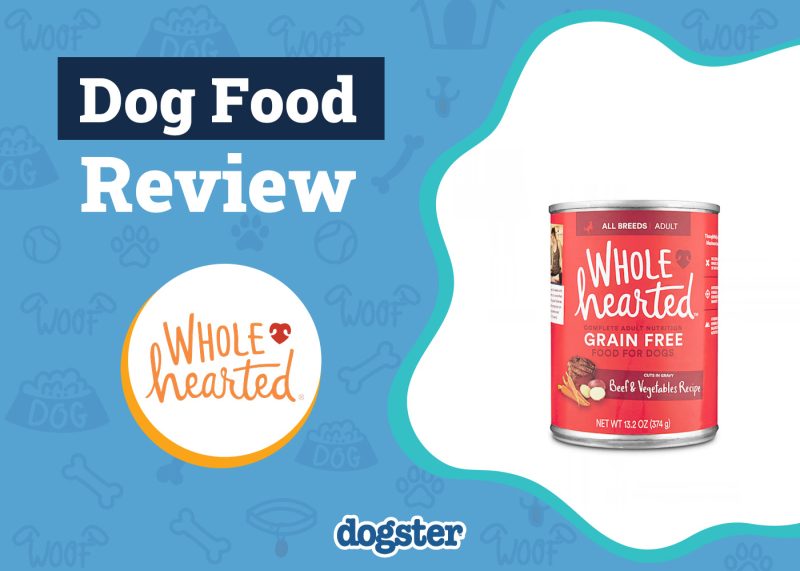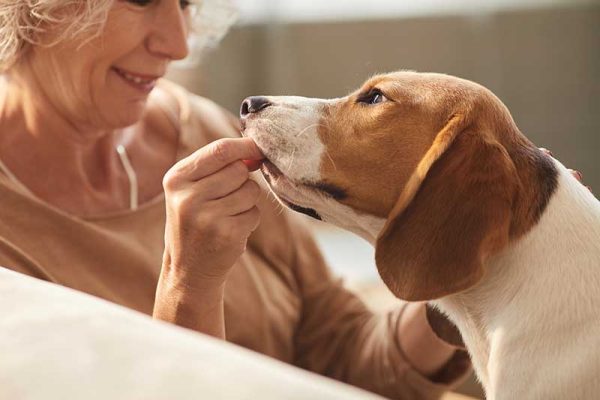In this article
Keeping your dog hydrated is an extremely important factor to consider not only if your dog spends time outdoors in the heat, but also just in general. Like humans, dogs are not exempt from heat-related issues, and canine dehydration is nothing to ignore, so much so that severe dehydration can lead to organ damage and even death. It’s vital to keep your dog hydrated, especially if you live in a hot climate and spend time outdoors with your pooch.
Thankfully, there are ways to keep your dog hydrated during the hot summer months, even for dogs who don’t drink as much water as others. In this guide, we’ll list six great ways to keep your dog hydrated to avoid possible medical complications. Let’s check them out!

What Is Canine Dehydration?
Before we get into ways to hydrate your dog, let’s first learn what canine dehydration is in the first place. Canine dehydration, in simplistic terms, is when a dog’s body loses more fluid than it’s taking in. Like all mammals, water is essential in keeping the body’s organs running properly, such as lubricating joints, regulating body temperature, cushioning internal organs, and aiding digestion. Mammals cannot live without water, and it’s critical to supply your dog with water at all times.
Dehydration can also result in the loss of electrolytes, like sodium, potassium, and chloride, all of which are responsible for balancing the body’s pH levels, aiding muscle function, regulating nerve function, and moving nutrients into cells. In severe cases of dehydration, vital organs, such as the kidneys, can shut down.
Dehydration can occur when a pup isn’t drinking enough water, especially if it’s warm and they’ve been panting, but also when they have vomiting and diarrhea that can result in losing a lot of fluids.
Now that we know the seriousness of keeping your dog hydrated, let’s get started with how to keep your beloved pooch hydrated and healthy.
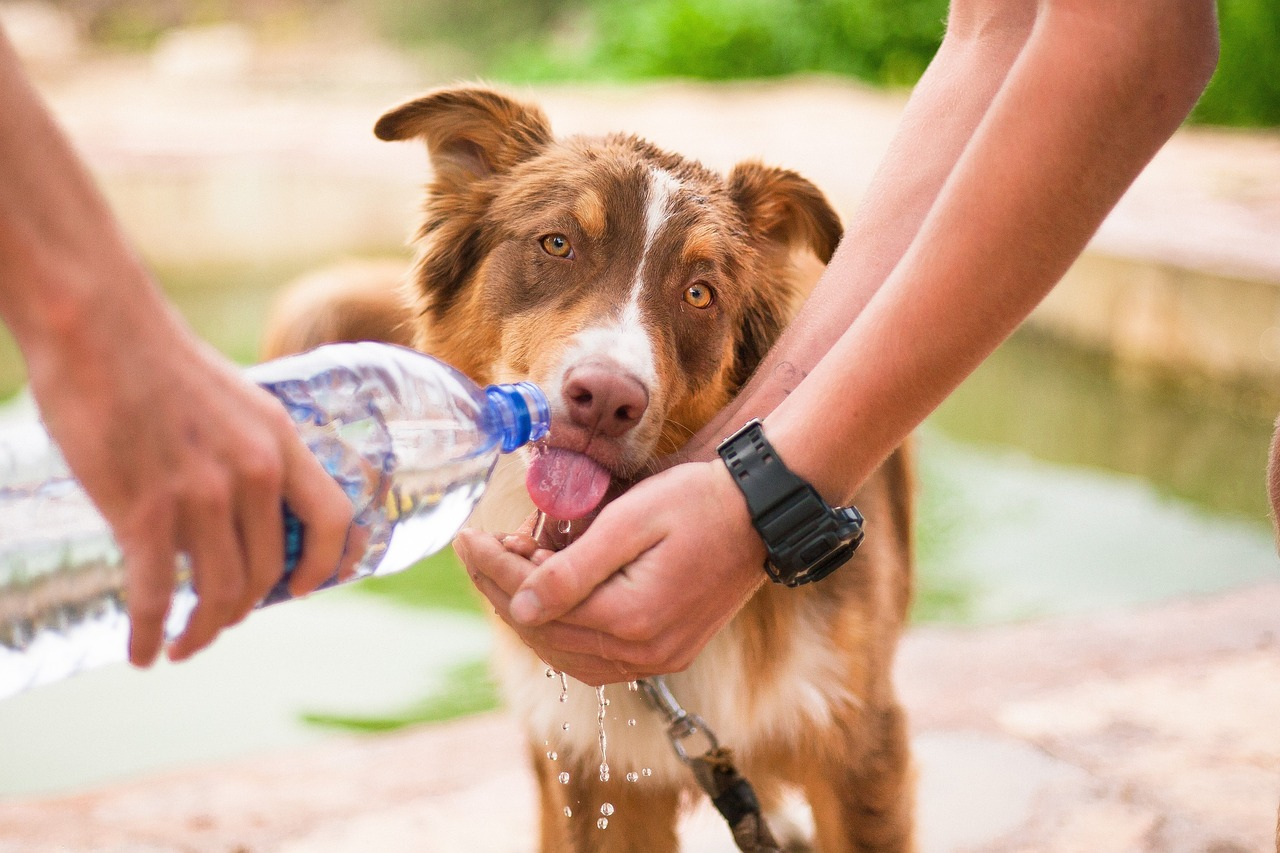

The 6 Ways to Provide Hydration for Dogs
1. Provide Constant Clean Water
This may seem like a no-brainer, but it’s crucial to keep fresh, clean water available at all times, both indoors and outdoors. In fact, a general rule is that dogs require at least 1 ounce of water per day for each pound of body weight. Other factors play a role in how much water a dog needs daily, such as activity levels, the outside temperature, the dog’s age, and their health. Your veterinarian is an excellent resource to use to ensure your particular dog is getting enough daily water.
If you need to speak with a vet but can't get to one, head over to PangoVet. It's an online service where you can talk to a vet online and get the personalized advice you need for your pet — all at an affordable price!
2. Add Water to Your Dog’s Food
Some dogs do not drink as much water as others, and adding water to their food is another great way to keep them hydrated, especially if your dog eats kibble. Ensure the water is not too cold or too hot—lukewarm is ideal.
You can also add water to wet canned food if needed, but canned wet food has much more moisture content than dry kibble (70% to 90%). Nonetheless, it certainly doesn’t hurt to add water at each feeding.
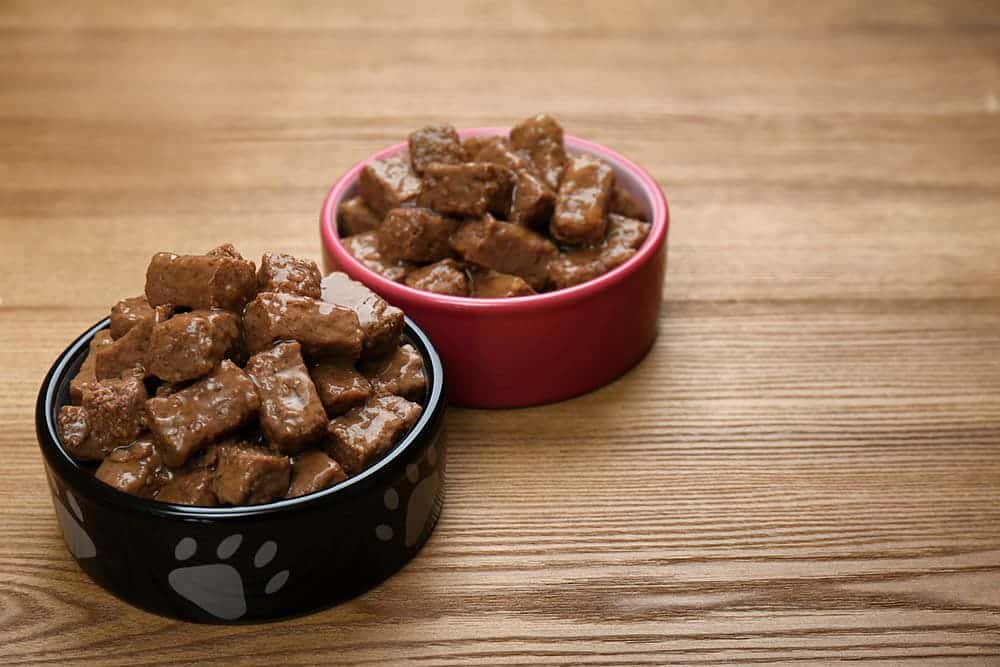
3. Invest in a Doggie Water Fountain
Dogs and cats are more apt to drink running water, and a doggie water fountain may entice your picky pooch to drink. These fountains will keep a steady flow of fresh, clean water available for your pooch. What’s more, these fountains are an excellent idea for dog owners who are away from home during the day.
4. Provide Pupsicles With Broth
Many dog owners have asked, “Can chicken broth hydrate my dog?” The answer is yes, it can. For the picky water drinkers, a great way to entice your dog to ingest fluids is to provide frozen no-sodium chicken broth or bone broth.
Both chicken broth and bone broth have health benefits, and dogs typically love the taste. An important aspect, however, is to ensure any chicken or bone broth you use does not have added preservatives and other harmful ingredients, like excessive sodium from added salt, onion, or garlic.
You can make your own chicken broth by boiling chicken at home; just be sure you do not add any seasonings and remove any bones or bone fragments, as they can be choking hazards. As for the bone broth, you can buy it or even purchase dog food with bone broth in it.
Freezing these broths into ice cubes will keep your dog entertained and hydrated at the same time. As a general rule and guideline for bone broth, provide 1 ounce of broth for every 20 pounds of weight. For chicken broth, provide ¼ cup for every 20 pounds of body weight.
- You may be interested in: 7 Homemade Pupsicle Recipes for Your Dog (Vet Approved)
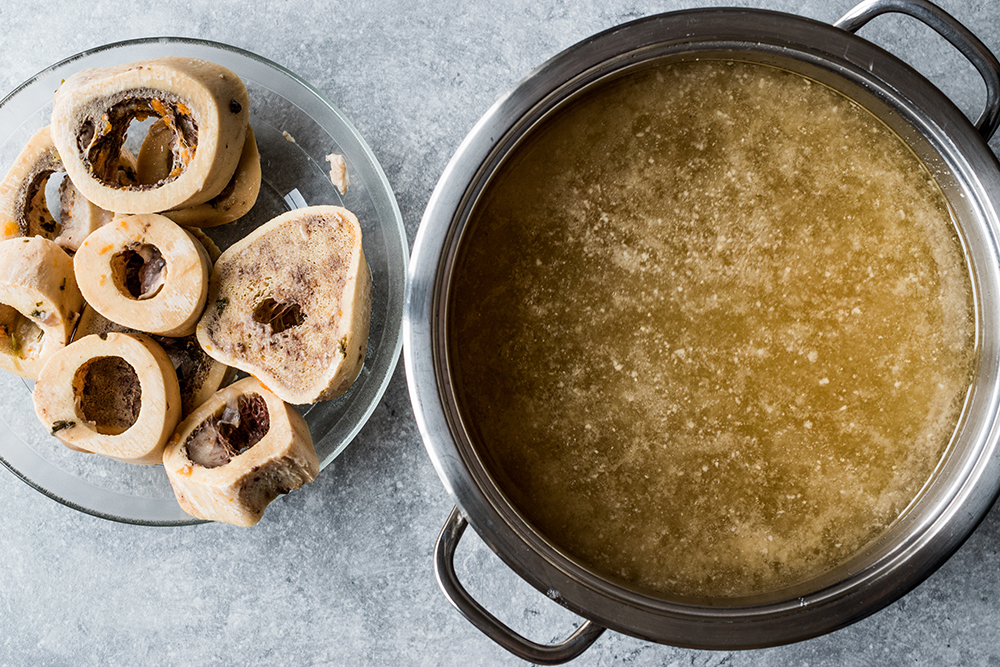
5. Make a Dog Smoothie
Dog smoothies are a fun way to keep your dog hydrated. Dogs can enjoy a smoothie made from strawberries, bananas, unsweetened yogurt (as long as your dog is not lactose intolerant), blueberries, apples (peeled with no seeds or stems), and other safe fruits. You can also make a vegetable smoothie from green beans, peas, carrots, or sweet potatoes if your dog likes them. Just cook until the vegetables are soft and then puree. Add some ice, put the mixture into ice trays, freeze, and let your pup enjoy!
6. Provide Ice Cubes
Simple ice cubes are an excellent way for the picky water drinker to ingest fluids. Dogs seem fascinated by the frozen chunks, and placing them in the water bowl with water will likely spike your dog’s interest.
You can also provide an ice cube while your dog is outside, preferably under shade. However, ensure the ice cube is not too big or too small for your dog’s size, as a small ice cube could be a choking hazard to a large dog and vice versa.

Signs of Dehydration In Dogs
Now that we know six great ways to hydrate your dog, it’s crucial to know the signs of dehydration so you know what to do in the event your dog gets a little dry.
- Excessive panting
- Dry nose
- Sunken eyes
- Thick saliva
- Dry, sticky gums
- Loss of appetite
- Lethargy
- Vomiting (with or without diarrhea)
- Weakness
- Stumbling
- Seizure
What to Do if Your Dog Gets Dehydrated
Prevention is the ultimate key to keeping your dog from getting dehydrated in the first place. Keeping fresh, clean water available at all times, both indoors and outdoors, is vital, as well as avoiding excessive exercise in extremely warm weather. However, if you suspect your dog is dehydrated and showing signs of heatstroke or severe dehydration, the best thing to do is contact your vet or nearby emergency vet immediately.
In case of mild dehydration, offer small amounts of water or you can offer an ice cube. For a small dog, offer ⅛ cup of water every hour. For medium to large breeds, offer ¼ cup of water every hour. Don’t let your pup gorge on water as this can cause vomiting.

Can Dogs Drink Too Much Water?
While water is vital, dogs can drink too much at once, which can cause vomiting and diarrhea from an electrolyte imbalance. It may seem like a good idea to offer your dog a gallon of water, but this may only make matters worse. Instead, simply offer the suggested amounts above every few hours and contact your vet for more advice.

Conclusion
Keeping your dog hydrated is essential for your dog’s overall health. Remember that prevention is key, and you should refrain from overexerting your dog in extreme heat, ensure your dog has plenty of shade while outdoors, and always offer fresh water. Never leave your dog outside in hot weather for long periods, and if you suspect your dog is dehydrated, contact your vet immediately.
Featured Image Credit: LightField Studios, Shutterstock
